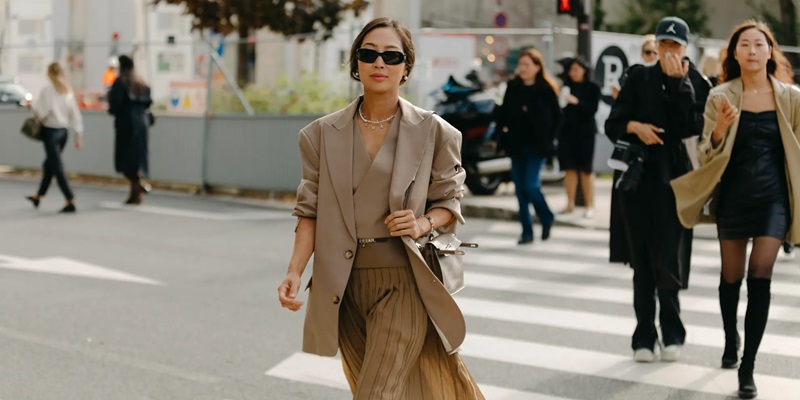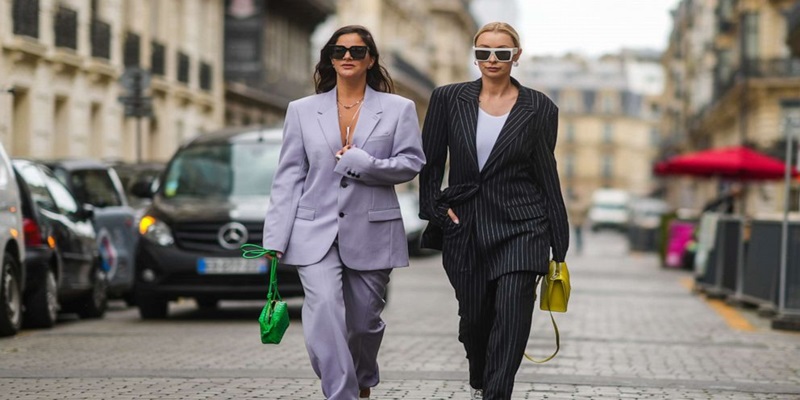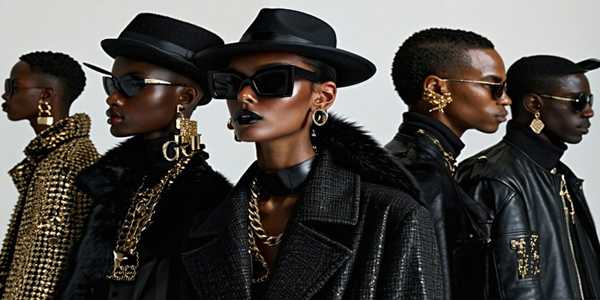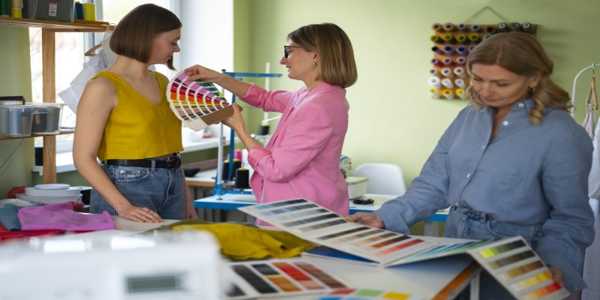The Evolution Of Workwear: Office Fashion Trends In A Hybrid World
As enterprises recalibrate to the post-pandemic hybrid occupational milieu, modern workwear fashion is experiencing an unparalleled transmutation. The confluence of virtual and on-site professional engagements has profoundly reevaluated entrenched sartorial paradigms. The epoch of rigid, prescriptive dress codes is receding, supplanted by a more pliant and utilitarian ethos reconciling individual aesthetics with professional decorum's requisites.

The Ascendance Of Business Casual Attire
Business casual outfits have become the quintessential wardrobe staple in this evolving milieu. This attire transcends the conventional dichotomy of formal and informal, amalgamating elements of both to create a versatile ensemble. Business casual outfits now encapsulate diverse garments, from tailored blazers coupled with refined trousers to bright yet relaxed shirts and blouses. This sartorial hybridization reflects a broader shift towards a more comfortable yet polished appearance, accommodating the diverse needs of the hybrid workspace.
Office Attire Trends 2024: A Paradigm Shift
As we advance into 2024, office attire trends 2024 are characterized by a pronounced shift towards individualized expression within the bounds of professional decorum. The era is witnessing an infusion of eclectic styles and innovative fabrics which challenge traditional norms. Office attire trends 2024 emphasize integrating avant-garde materials and ergonomic designs, reflecting an increased focus on functionality and aesthetic appeal. This trend signifies a departure from monolithic dress codes towards a more nuanced approach that accommodates personal style while maintaining professional standards.
The Synthesis Of Comfort And Professionalism
The contemporary discourse on modern workwear fashion underscores a synthesis of comfort and professionalism. This paradigm shift is driven by the necessity of adaptability in a hybrid work setting, where attire must seamlessly transition between virtual meetings and in-person interactions. Modern workwear fashion now embraces breathable fabrics, ergonomic cuts, and innovative designs catering to comfort and visual sophistication. This evolution represents a strategic alignment of fashion with the pragmatic needs of today's dynamic work environment.
The Emergence Of Multifunctional Garments
A notable trend in modern workwear fashion is the emergence of multifunctional garments. These pieces are designed to offer versatility, allowing for easy adaptation between different work contexts. Multifunctional garments often feature convertible elements, such as adjustable hems or removable layers, which enhance their utility. This innovation reflects a growing preference for clothing for multiple purposes, providing aesthetic appeal and practical benefits in a hybrid work environment.
Redefining Professional Aesthetics
The redefinition of professional aesthetics in modern workwear fashion also extends to accessories and footwear. Integrating high-tech materials and bespoke designs has become increasingly prevalent, reflecting a broader trend towards personalized and technologically advanced fashion. Accessories and footwear now incorporate features such as adaptive fit technologies and intelligent textiles, further blurring the lines between traditional office attire and modern innovation.
Convergence Of Style And Functionality
In summary, the convergence of style and functionality is a defining characteristic of modern workwear fashion in the hybrid work era. The ongoing transformation of office attire is marked by an embrace of versatility, individual expression, and cutting-edge design. Modern workwear fashion embodies a sophisticated interplay between comfort and professionalism, facilitated by integrating novel materials and innovative garment designs. As we navigate the evolving landscape of business casual outfits and office attire trends in 2024, it is evident that the future of workwear will continue to evolve, reflecting both the needs and aspirations of the contemporary workforce.
The Paradigm Shift In Business Casual Outfits
In the contemporary work milieu, business casual outfits have transcended erstwhile boundaries, metamorphosing into an intricate amalgam of sartorial flexibility and strategic sophistication. This paradigm shift signifies a profound departure from ossified conventions towards a more adaptable and versatile ethos. The business casual ensemble now epitomizes comfort and professional gravitas, fostering a seamless interest between virtual and human work environments. Artisanal elements such as bespoke joggers, intricately woven knit blazers, and opulent moccasins exemplify this evolution, mirroring a broad trend towards pragmatic yet elegantly refined attire.

Unveiling The Aesthetic Of Modern Workwear Fashion
The quintessence of modern workwear fashion lies in its capacity to amalgamate avant-garde aesthetics with functional efficacy. The recent evolution reflects a departure from conventional sartorial rigidity, embracing an eclectic fusion of high-tech fabrics and bespoke tailoring. Garments now incorporate sophisticated textile innovations like moisture-wicking blends and antimicrobial finishes, catering to comfort and resilience. This paradigm is marked by an intricate interplay between cutting-edge design and practical functionality, encapsulating an era where style is seamlessly integrated with performance.
Redefining Office Attire Trends 2024
The advent of office attire trends in 2024 heralds a radical reconfiguration of traditional work garb, characterized by a synthesis of minimalist design and dynamic adaptability. This emerging trend accentuates an ascendant preference for versatile and innovative garments. Emblematic of this trend are multifaceted pieces such as modular blazers with removable linings and adaptable trousers engineered for formal and casual settings. This redefinition underscores a broader cultural shift towards sartorial fluidity, aligning with a more nuanced and sophisticated professional identity.
Embracing The New Norm: Hybrid Workwear Essentials
As the hybrid work model solidifies, there is an increasing emphasis on modern workwear fashion that seamlessly integrates remote and in-office requirements. Essential elements of this new norm include hybrid garments that transition effortlessly between varied work contexts. Innovations such as adaptable waistcoats and transformable outerwear are gaining prominence, reflecting a broader inclination towards multifunctional and versatile attire. This evolution indicates a more significant trend wherein clothing is no longer static but dynamically responsive to fluctuating professional environments.
The Emergence Of Convergence In Work Attire
The intersection of office attire trends in 2024 with emergent sartorial innovations underscores a fascinating convergence of form and function. This convergence manifests in garments that bridge the gap between formal and informal, enhancing their utility across diverse contexts. Incorporating advanced materials like eco-friendly fabrics and ergonomic design elements signifies a progressive shift towards sustainable yet stylish professional wear. This amalgamation represents a broader paradigm in harmonizing work attire's aesthetic and practical aspects.
The Nuances Of Business Casual In The Modern Workplace
In the evolving landscape of business casual outfits, subtle nuances are becoming increasingly significant. This nuanced evolution reflects a growing appreciation for bespoke tailoring and refined aesthetic details that enhance professional demeanour. Key aspects include integrating understated yet sophisticated accessories, such as artisanal belts and handcrafted cufflinks, which imbue traditional business casual wear with a contemporary flair. The emphasis on these finer details underscores a broader trend towards a more discerning and individualized approach to professional attire.
Conclusion
The metamorphosis of contemporary occupational vesture vis-à-vis the hybridized occupational paradigm epitomizes a profound divergence from conventional sartorial axioms. The amalgamation of business casual ensembles has emerged as a symbolic manifestation of this paradigm shift, synergistically intertwining sartorial comfort and urbane sophistication to cater to the bifurcated exigencies of telecommuting and in-office professional settings.





